On painting (extract) P. B.: Mauro, your painting dedicated to Hiroshima after the bombing is a work that is truly enormous, almost 30 meters in length. When did your start this painting? |
 |
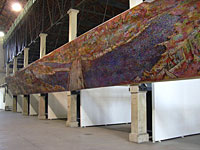 |
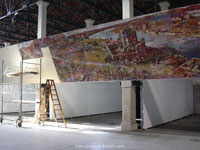 |
“ Hiroshima ” is about thirty meters long and two and a half meters high. It's an enormous puzzle made up of 220 assembled parts. The project consisted of two distinct phases: “breaking up” and “reassembling”. In the first phase the exhibition of the work is followed by the sale of dissociated parts of the puzzle. The idea is that people can buy a part of the painting during the exhibition, therefore letting empty spaces appear in the work until it is progressively deleted. In this way I try to illustrate, or better, to make the mechanism of memory and oblivion tangible. The second part of the exhibition, which will take place in an unspecified number of years, will be dedicated to the reconstruction of the work. |
 |
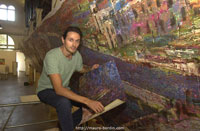 |
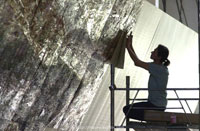 |
P. B.: But it will have to be an incomplete reconstruction... M. B.: Definitely incomplete but emblematic of memory that is erased. Some parts will probably be damaged, others lost forever... But this is part of the mechanism of collective memory. Each one is a depository for an individual experience, represented by a part of the painting, which for however small the abstract entity drawn from a figurative work, represents being part of the event. By reconstructing the work I intend to underline the need to feed memory and to assert that in the face of tragic events in history what counts above all is solidarity, the need to get people to agree in order to reach something constructive. Therefore the project stages a metaphorical and ritualistic representation of man's destructive actions together with the possibility of reconstruction through memory. |
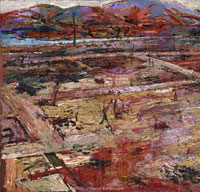 |
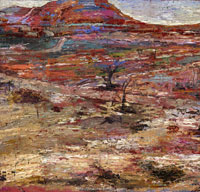 |
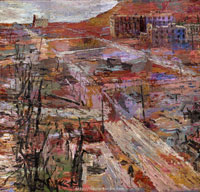 |
P. B.: A new dimension can be seen in this work compared to your previous one: a stand is taken towards the history of humanity. P. B.: What did working on such an unusually sized painting give you? |
 |
P. B.: How did “ Hiroshima ” make your painting evolve? M. B.: First of all, compared to the previous series of crucifixes, it is a more “optimistic” work, even if that seems like a paradox. Hiroshima is a very delicate subject, I was afraid of speaking about something I didn't know, since I hadn't experienced it. In my opinion it's important for an artist who has never experienced the tragedy of war to commemorate and at the same time to give a message of hope. I tried to make this clear through the choice of color; this element represents energy that circulates, life that counterbalances death. In reality, the choice of using many colors to paint the ruins is an idea I got from a passage of Se questo è un uomo by Primo Levi, which describes the sun setting on a concentration camp. The contrast between the beauty of the sky and the absolute squalor of Auschwitz perfectly underlines the total indifference of nature to human tragedies, contrary to an “expressionist” approach, which consists of representing the participation of nature, an approach I wanted to avoid. |